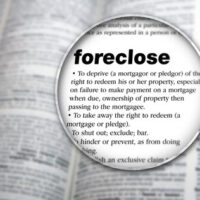What is Reinstatement and How Bank Errors Can Keep Homeowners in Foreclosure

When a homeowner is put into foreclosure, the initial reaction may be to fight the foreclosure. That is very valid; many foreclosures are fraudulent, instituted by the wrong party, or the bank simply doesn’t have the paperwork that it needs in order to foreclose.
What is Reinstatement?
Sometimes the homeowner wants to get current, by paying whatever the past missed payments were. By doing that, the homeowner can resume making the normal monthly payments under the mortgage.
And, in fact, most standard loan documents provide the homeowner the right to bring the loan current—called reinstatement—at any point before a foreclosure judgment is entered (note that bringing the loan current—reinstatement—is different than paying off the entire balance remaining on the loan, which is called a payoff).
Reinstatement Figures
In order to reinstate, the homeowner has to know what has not been paid, or what has to be paid to bring the loan current and get out of foreclosure.
A letter must be sent requesting reinstatement. When the letter is sent, the bank or servicer will respond with a dollar figure. The dollar figure needed to reinstate is often a shock to the homeowner. Sometimes that’s because the homeowner doesn’t realize that there are interest, penalties or fees that the bank is permitted to add onto the loan, when payments are late. But sometimes the reinstatement figure is high because the bank is adding things into it that it is not allowed to add.
Illegal Amounts Added to Reinstatement
Often, banks will add fees that are not expressly allowed to be added under the mortgage. For example, banks may add servicer or trustee fees. Not only are these fees not allowed under the loan documents, there is no way of calculating them or making sure they are valid.
Reinstatement only requires the homeowner pay off fees and costs that have been actually incurred—it does not require the homeowner to pay any fees in advance, before they have been incurred or charged yet. But sometimes, banks will add “anticipated” costs, or costs that have not actually been incurred yet, but will be incurred in the future if there is continued nonpayment.
Simple math errors can make reinstatement figures inaccurate. A bank may miscalculate when the homeowner’s last actual payment was, or continue to add late fees beyond the point when they can legally be added (usually after acceleration of the entire balance of the loan).
How Reinstatement Errors Hurt Homeowners
Reinstatement errors prevent a homeowner from exercising his or her rights to reinstate the loan.
The practical problem is that while the homeowner is busy negotiating the actual, real, accurate reinstatement figure, more payments are being missed, and more late fees or interest are being tacked on. By the time the homeowner gets an accurate reinstatement figure that contains only what the lender can legally charge, there is a chance that the homeowner doesn’t have enough money to reinstate the loan. The homeowner has missed his or her “window of opportunity” to get current, just because of the bank’s inability to provide an accurate payoff figure.
We can help you with a strategy to avoid or fight foreclosure. Contact the Miami foreclosure defense attorneys at Velasquez & Associates P.A. today for help.
https://www.jvelasquezlaw.com/should-you-worry-about-second-liens-foreclosing/
